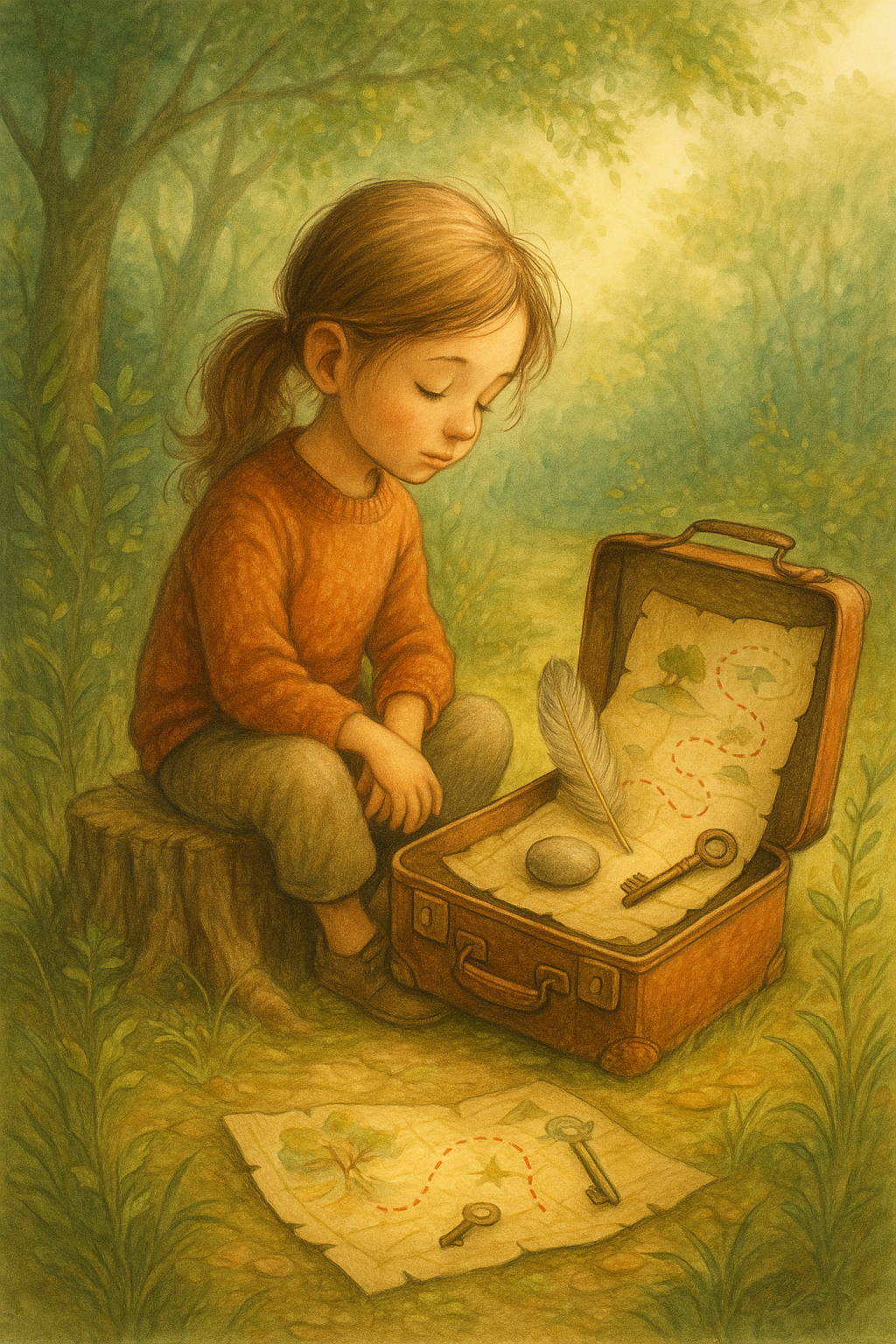02.A suitcase to begin with
Once upon a time, in a village on the edge of the Thousand Roads Wood, there was a little girl named Livia.
She had big, silent eyes, those of someone who observes far more than she says.
On her seventh birthday, her grandmother gave her a small suitcase. It was simple, with no precious fasteners, but it had a strange light that seemed to change with time.
"This is your suitcase of invisible things," Grandma said.
"Whenever you feel something but can't say it, whenever you want to understand who you are, you can open it."
Livia did not understand right away, but she took the suitcase with her everywhere.
To school, when she felt different. At home, when she felt like crying without knowing why.
In the woods, when questions pushed her away.
Inside the suitcase, over time, mysterious objects began to appear:
A feather plucked every time he said "yes" instead of "no."
A rock that became heavy if she listened more to others than to herself;
A key without a door, which smelled like future.
One day, on a field trip, Livia got lost among the trails.
She sat on a log and opened the suitcase.
All the objects began to shine together.
And that's when she realized: the suitcase contained not answers, but the memory of her questions.
She returned home with a map drawn in her heart.
She did not yet know where she would get to, but she had found the most important thing: the courage to begin.
Message for those reading
Like Livia, we too have an invisible suitcase.
Sometimes we call it childhood, sometimes fear, intuition, or simply "I don't know what."
But every object we find in it can guide us if we learn to listen to it.
For those who read with adult eyes
This fairy tale is about exploration, but also about freedom, intuition, trust and listening.
It is a story for children, but it carries important questions for adults as well:
Do we really give children space for what they really feel?
To choose what attracts them, without immediately explaining or directing?
And to our inner child, how much space has been left, how much freedom?
What are we willing to let go of in order to go back in time and regain the freedom we were not granted?
The child reading this story may recognize himself or herself in Livia, in his or her desires or fears.
But you, reading with her or him, may also feel something resonate:
Your childhood, your map, your forgotten tools.
This fairy tale can be read simply as an adventure--or as a conversation starter:
What items would you choose?
What is in your suitcase today?
Where would you like to go if you could leave now?
Talk to your inner child.
And also talk to that part of you that, perhaps, is still waiting for a signal to leave.
Because every fairy tale, if received carefully, is a small gateway.
A place where one can meet, recognize--and perhaps, begin again.

